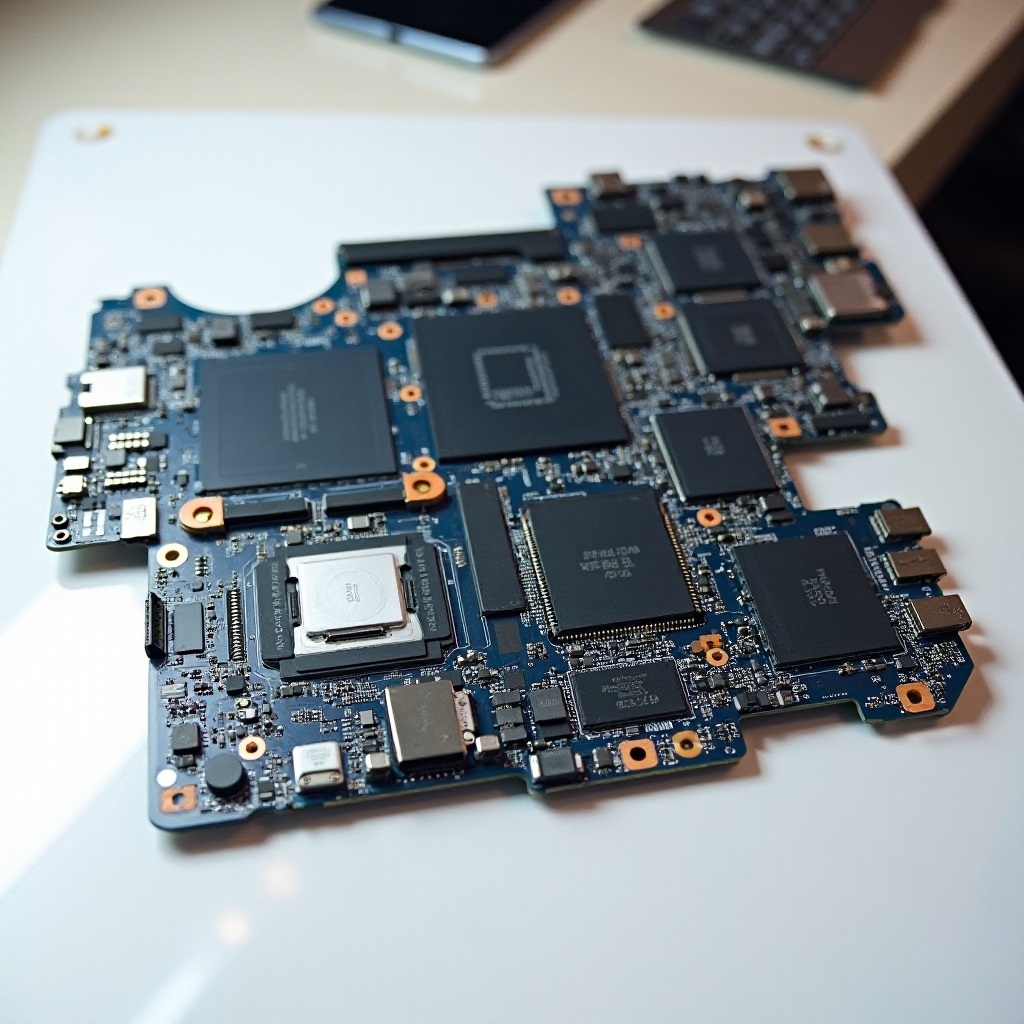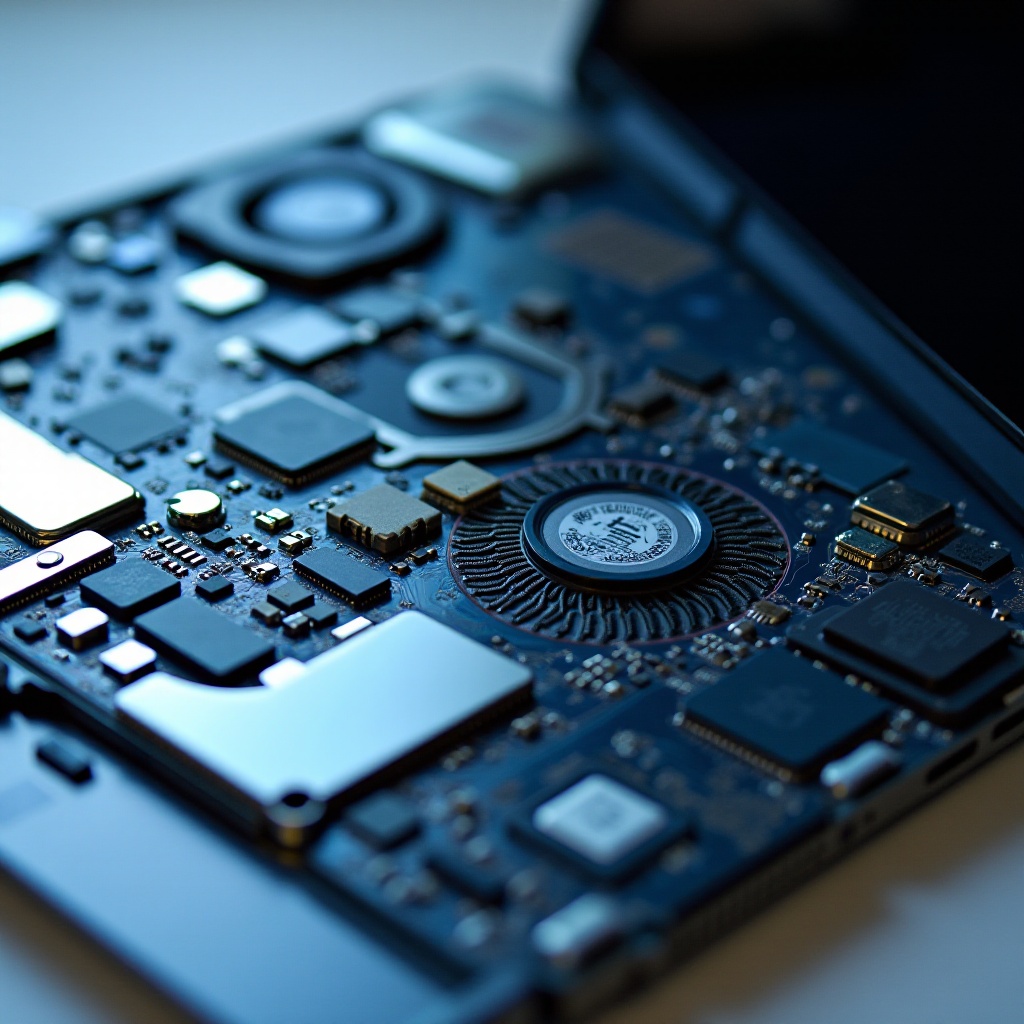Introduction
The MacBook Pro M1 represents one of the most significant advancements in Apple’s line of laptops, thanks to its integration of proprietary technology and high-performance features. Central to its functionality is a crucial component – the motherboard. This foundational element plays a pivotal role in ensuring the device’s seamless operation. Let’s dive into what the motherboard entails, providing a deeper understanding of its architecture, components, and the essential role it plays in the MacBook Pro M1.

Understanding the MacBook Pro M1
The MacBook Pro M1 marked a substantial shift in Apple’s engineering approach, utilizing their in-house developed M1 chip. This transition from Intel processors to Apple Silicon has set a new benchmark in the laptop industry. Powered by the M1 chip, the MacBook Pro stands out with stellar performance capabilities, optimized power consumption, and an integrated ecosystem that enhances the device’s overall utility. By harnessing the efficiency and speed of the M1 chip, it also leverages various architectural tweaks that improve the laptop’s operational fluidity and user experience.
Understanding the central role of the motherboard in this context allows for a greater appreciation of how each piece of hardware collaborates for enhanced performance. The motherboard is the primary circuit board that connects all essential components within the laptop, ensuring they communicate effectively and work in harmony.
The Significance of the Motherboard in Laptops
In any laptop, the motherboard is often regarded as the backbone of the device. It is the principal conduit for communication between the CPU, memory, storage devices, and peripheral components. Serving as the main hub, the motherboard coordinates data signaling and power distribution across various hardware elements.
Its significance is even more pronounced in high-performance laptops like the MacBook Pro M1. Here, the motherboard is engineered meticulously to accommodate the sophisticated architecture of the M1 chip, maintaining the integrity of the system’s design while optimizing heat dissipation and space management. This comprehensive orchestration ensures that users experience enhanced speed, seamless multitasking, and reliable performance under different workloads.
Detailed Examination of the MacBook Pro M1 Motherboard
Design and Architecture
The design of the MacBook Pro M1 motherboard reflects a shift towards greater integration and compactness. The orientation and layout of components have been streamlined to facilitate optimal space usage while ensuring the M1 chip’s integration is efficient and heat management is effective. This compact design also aligns with Apple’s aesthetic philosophy, producing a sleek and slim profile for the laptop.
Core Components
Key components found on the MacBook Pro M1 motherboard include:
– The M1 Chip: This is the heart of the device, integrating the CPU, GPU, and neural engine on a singular chip for improved efficiency and performance.
– RAM: Unified memory architecture allows for quicker data access and higher performance.
– Storage Interface: SSD slots are integrated, providing rapid read/write speeds essential for the responsiveness of the system.
– Connectivity Interfaces: USB-C, Thunderbolt ports, and wireless communication modules allow for comprehensive connectivity options.
Integration of the M1 Chip
One of the standout features of the M1 motherboard is the integration of the M1 chip. Unlike traditional motherboards which house separate components (CPU, GPU, etc.) connected via interfaces, the M1 chip combines these elements. This System on a Chip (SoC) design reduces latency and power consumption while boosting overall device performance and responsiveness.

Performance and Efficiency Benefits
Speed and Data Handling
The MacBook Pro M1’s motherboard, with its integrated design, facilitates remarkable speed in data processing and handling. The M1 chip’s architecture enables faster computation and significantly enhances multitasking capabilities. Operations that involve large data sets, complex calculations, and high-resolution graphics are managed more efficiently due to the motherboard’s optimized data pathways.
Energy Efficiency
The shift to the M1 chip and its seamless integration via the motherboard translates into notable energy efficiency. By achieving more performance per watt, the MacBook Pro M1 can sustain longer battery life and reduced power consumption. This efficiency stems from reduced power wastage and streamlined component communication, a direct benefit of the integrated motherboard.
Thermal Management
Efficient thermal management is crucial for maintaining performance and hardware longevity. The MacBook Pro M1 motherboard is designed with innovative cooling solutions that facilitate optimal thermal dissipation. The compact and integrated layout reduces hotspots and ensures consistent thermal performance, even under heavy workloads. This thermal efficiency ensures that the laptop remains cool to touch and minimizes the risks associated with overheating.

Maintenance and Troubleshooting the Motherboard
Despite its advanced design, like any crucial component, the motherboard can require maintenance or troubleshooting. Here are key aspects to consider:
1. Regular Firmware Updates: Ensuring the system firmware is up-to-date can resolve many hardware communication issues.
2. Safe Handling: Due to its integrated design, any physical repair should be carried out by authorized technicians to avoid voiding warranties or causing damage.
3. Symptom Diagnosis: Signs of motherboard issues include erratic performance, connectivity problems, and failure to boot. Running diagnostic tools regularly can help in early identification and resolution.
Conclusion
The motherboard in the MacBook Pro M1 is a sophisticated piece of technology that enhances the overall functionality and performance of the device. Its innovative design, combined with the integration of the M1 chip, delivers unparalleled efficiency, speed, and thermal management. Understanding this critical component allows users to appreciate the engineering marvel behind their high-performing device.
Frequently Asked Questions
What are the main components of the MacBook Pro M1 motherboard?
The main components include the M1 chip, RAM, storage interface, and connectivity interfaces such as USB-C and Thunderbolt ports.
Can the motherboard in a MacBook Pro M1 be replaced or upgraded?
Due to its integrated design, replacing or upgrading the motherboard should only be performed by authorized professionals to avoid damage and maintain warranty.
How does the motherboard affect my MacBook Pro M1’s performance?
The motherboard’s design and integration with the M1 chip enable faster data processing, energy efficiency, and improved thermal management, directly impacting overall performance and user experience.
